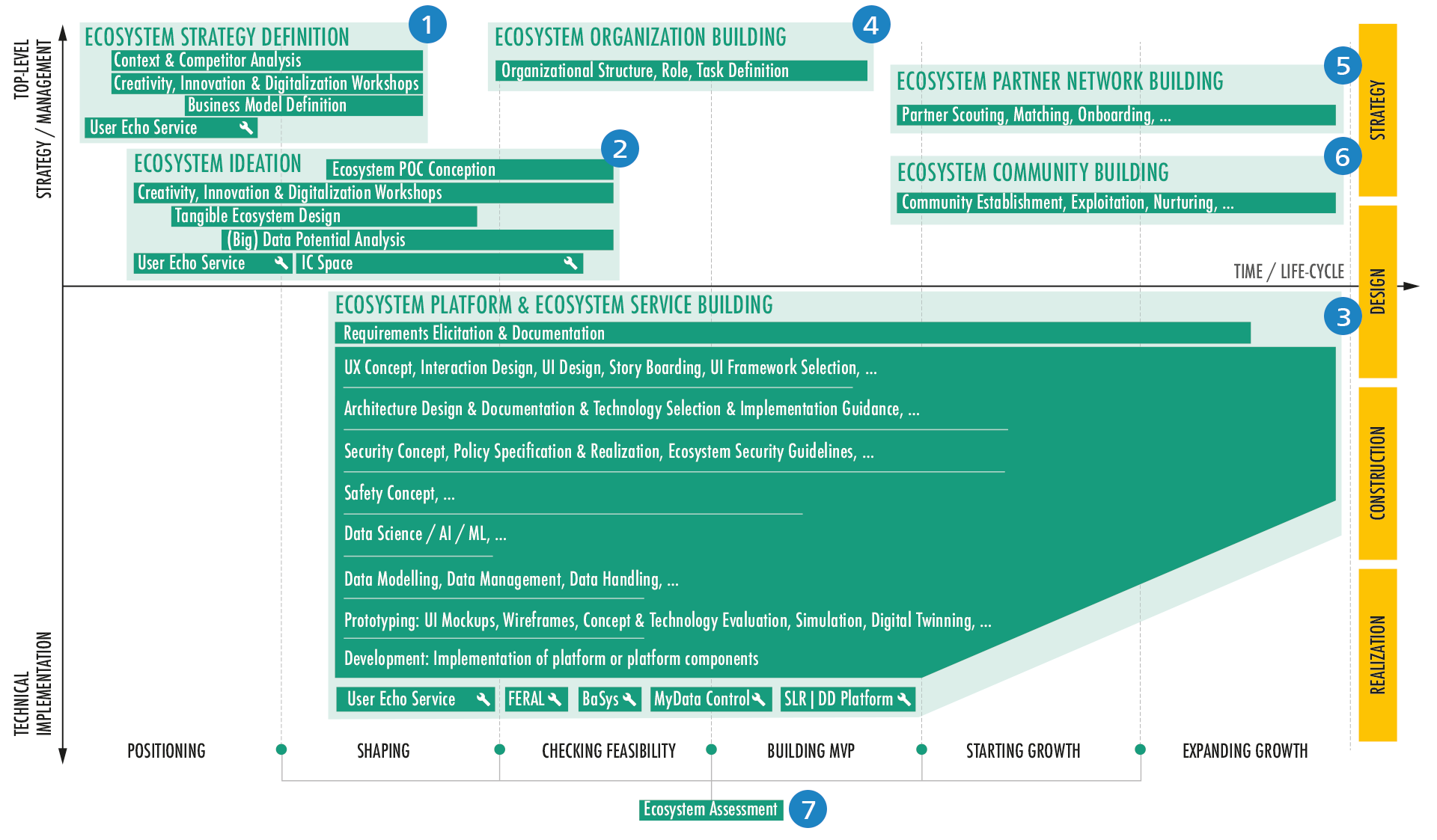Six typical phases in the lifecycle of a Digital Ecosystem. Based on the following statements, you can easily determine where your company currently stands.
1 | My company has not given any thought to Digital Ecosystems yet
Then your company is in the positioning phase and must at least think about Digital Ecosystems, because they will influence the environment of all companies. Then these three decision options are open to you:
- Join one or more ecosystems that already exist or are in the process of being established,
- Initiate your own ecosystem, or
- Make a deliberate decision to stay away from Digital Ecosystems.
2 | My company has decided to build a Digital Ecosystem
Then your company is in the design phase of the Digital Ecosystem. This primarily involves the detailed development of concrete ideas for an ecosystem service and testing them on concrete examples. To do this, you need to comprehensively and thoroughly think about the Digital Ecosystem and explicitly design the functionalities, asset flows, money flows, data flows, and contractual relationships.
3 | My company has a precise idea of what the Digital Ecosystem should look like
Then your company is in the phase of examining the prospects for success in terms of feasibility and viability, based on the initial design. This means that you need to shed light on the business, legal, and technological aspects of all decisions made so far that affect your organization, the partners, and the user community.
4 | My company has assessed the prospects for success of the envisaged Digital Ecosystem
Then your company is in the MVP phase. If you have developed a promising idea for an ecosystem service, you should develop a Minimal Viable Product (MVP) as quickly as possible, and use it to take up a position on the market. This means that you should reduce the scope and complexity of the developed idea to such an extent that you can produce a useful result as quickly as possible. To do this, you can, for example, take out certain functionalities or do processes that can be automated manually at first. However, the developed MVP should be able to illustrate the basic idea and functionality of the ecosystem service very well and generate enthusiasm.
5 | My company has released an MVP of its Digital Ecosystem and is thus “live”
Then your company is in the phase of starting growth. Through early adopters and additional measures to bring partners together and create incentives, you must successively bring more participants into the ecosystem so that supply and demand will increase. This is also where the initial and intended network effects begin.
6 | My company has successfully completed an initial growth phase with its Digital Ecosystem
Then your company is in the phase of expanding growth. You need to make your Digital Ecosystem and the platform fit for fast and high scalability by means of a high degree of automation and a powerful organization. Because this is the only way you can fully benefit from the characteristics of Digital Ecosystems: The number of partners and available offerings leads to self-reinforcing network effects.
Back to overview












